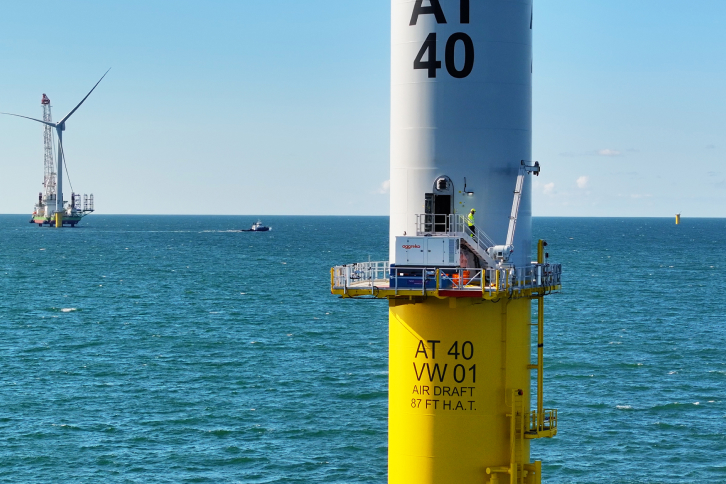News
2024-02-03 10:00:00.0Iberdrola reinforces its commitment to marine biodiversity and the responsible development of offshore wind energy
- The initiative is part of the Regional Wildlife Science Collaboration (RWSC).
- RWSC releases a plan to identify and mitigate potential impacts of offshore wind development on wildlife.
- Vineyard Wind One construction work have been halted until spring due to whale migration.
Iberdrola has reinforced its environmental commitment to offshore wind energy. As part of the Regional Wildlife Science Collaborationn for Offshore Wind (RWSC), the company released the Integrated Science Plan for Offshore Wind, Wildlife and Habitat in Atlantic Waters in US Atlantic Waters.
"This historic plan will lead to further regional data collection and scientific studies on the interaction between offshore wind energy development and the diverse ecosystems along the East Coast," said Pedro Azagra, CEO of Avangrid. "We look forward to continuing the leadership of US offshore wind through the development and implementation of best practices that will help guide the future of this entire industry," Azagra asserted.
The company, through its subsidiary Avangrid, is a founding member of the RWSC, a collaboration formed in 2021 between US federal agencies, Atlantic coast states, offshore wind companies and environmental non-profit organisations - with the aim of coordinating offshore wind and wildlife research, data collection, and data management with the wider research community.
The Science Plan will support the study of science that can help protect wildlife and inform management and conservation decisions. One of the main goals of the Science Plan is to encourage the use of consistent methods and data standards across the many planned and ongoing research projects on marine mammals, birds, bats, marine turtles, protected fish, oceanography, seabed habitats and new technologies.
The Science Plan is the result of more than two years of work between scientists and representatives from government, industry and environmental groups that make up the unique regional collaboration. In addition, the Science Plan will result in independent and peer-reviewed science that can help protect wildlife and conserve ocean habitats, while enabling states and the federal government to work toward theirgoals of expanding offshore wind energy.
Emily Shumchenia, the director of the RWSC, stated, "This Science Plan provides the blueprint for the region's future work. It is also a call to action to collaborate in advancing our understanding of offshore wind energy and marine ecosystems."
Avangrid is building the nation's first large-scale offshore wind project - the 806-megawatt Vineyard Wind 1, - located 15 miles off the coast of Martha's Vineyard. Vineyard Wind 1 will generate electricity for more than 400,000 homes and businesses in the Commonwealth of Massachusetts, create 3,600 full-time equivalent jobs for years, save customers $1.4 billion over the first 20 years of operation, and is expected to reduce carbon emissions by more than 1.6 million tons per year, the equivalent of taking 325,000 cars off the road annually.
Work halted until spring by whales
In accordance with federal and state regulations, Vineyard Wind One has halted pile driving activities due to migration patterns and the possible presence of whales in the area. Activities will resume beginning in the spring.
All this is part of the company's protection and sensitivity when it comes to sustainability and biodiversity.
The structures, which leave from the Asturian port of Avilés, are being left on land until work resumes. They are for the second phase of the Vineyard Wind One wind farm construction of, which is already partially operational.







